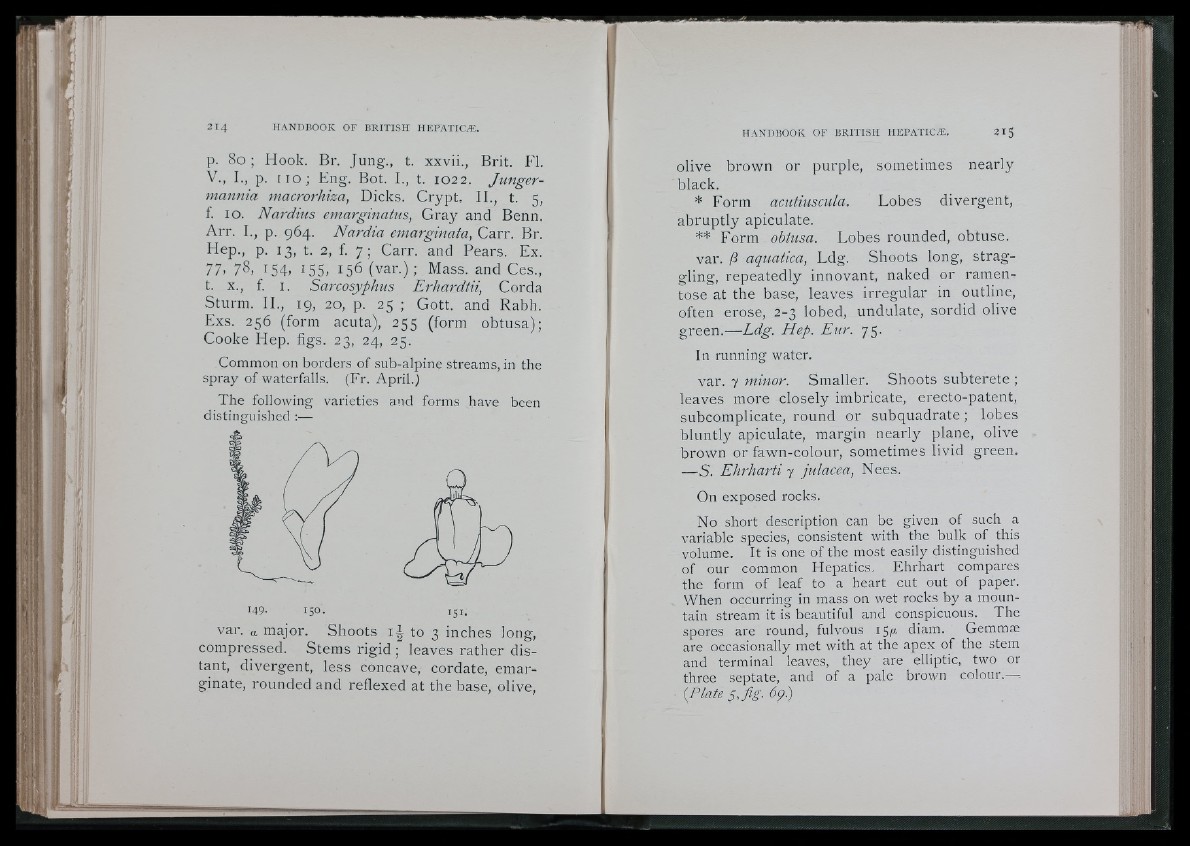
i
i/C
I;
ii
p. 80 ; Hook. Br. Jung., t. xxvii., Brit. FI.
V., I., p. n o ; Eng. Bot. E, t. 1022. Jungermannia
niacrorhiza, Dicks. Crypt . II., t. 5,
f. 10. Nardius emarginatus, G r a y and Benn.
Ar r . I., p. 964. Nardia emarginata, Carr. Br.
Hep., p. 13, t. 2, f. 7 ; Carr, and Pears. Ex.
77» 78, 154; G55) 156 (v a r . ) ; Mass. and Ges.,
t. X., f. I. Sarcosyphus Erhardtii, Corda
Sturm. IE, 19, 20, p. 25 ; Gott. and Rabh.
Exs. 256 (form acuta), 255 (form obtusa) ;
Cooke Hep. figs. 23, 24, 25.
Common on borders of sub-alpine streams, in the
spray of waterfalls. (Fr. April.)
The following varieties and forms have been
distinguished ;—
var. a major. Shoots i-l to 3 inches long,
compressed. Stems rigid ; leaves rather distant,
divergent , less concave, cordate, emarginate,
rounded and refiexed at the base, olive.
oliv e b rown or purple, somet imes nea r ly
black.
* Form acutiuscula. Lobe s divergent ,
abrupt ly apiculate.
** Form obtusa. Lobe s rounded, obtuse.
var. P aquatica, Ldg. Shoots long, s t rag gling,
repeatedly innovant, naked or ramen-
tose at the base, leaves irregular in outline,
often erose, 2-3 lobed, undulate, sordid olive
gre en.— Ldg. Hep. E u r . 75.
In running water.
var. y minor. Smal ler . Shoots subterete ;
leaves more c losely imbricate, erecto-patent,
subcomplicate, round or su b q u a d r a te ; lobes
blunt ly apiculate, margin near ly plane, olive
brown or fawn-colour, somet imes livid green.
— S. Ehrharti y julacea, Nees.
On exposed rocks.
No short description can be given of such a
variable species, consistent with the bulk of this
volume. It is one of the most easily distinguished
of our common Hepatics, Ehrhart compares
the form of leaf to a heart cut out of paper.
When occurring in mass on wet rocks by a mountain
stream it is beautiful and conspicuous. The
spores are round, fulvous diam. Gemmae
are occasionally met with at the apex of the stem
and terminal leaves, they are elliptic, two or
three septate, and of a pale brown colour.— ^
{Plate 5, jig. 69)